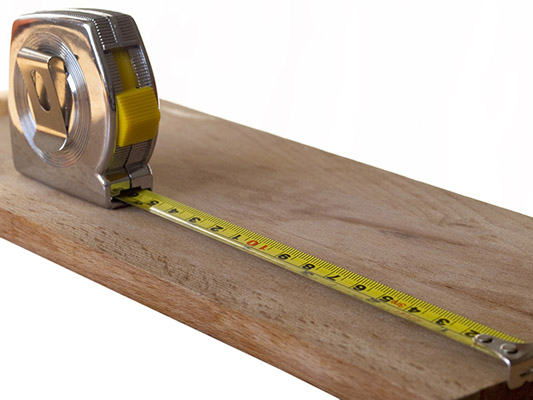One of the most confounding measurements to understand if you haven’t been around the sawmill and lumber business for a long time is gross tally and net tally. What exactly is the difference between gross tally and net tally? And why is lumber sold both net tally and gross tally? How do you convert from gross tally to net tally? We’ll take you through the basics.
What is the Difference Between Gross Tally and Net Tally?
Gross tally, also sometimes called green tally, is the volume of wood in board feet delivered to the mill after it is cut. This lumber hasn’t been dried yet and has a high amount of moisture in it. When lumber dries, water is removed from the wood resulting in a smaller overall volume of wood. That smaller volume of wood is known as net tally.
Gross Tally >> the lumber volume measured before kiln drying.
Net Tally >> the lumber volume measured after kiln drying.
Why is Net Tally versus Gross Tally a Big Deal?
It is necessary to understand whether a lumber quote or price is based on gross tally or net tally. The issue isn’t always whether the tally is net or gross, but how that number was determined. Find out whether the tally was measured after coming out of the kiln or whether the gross tally was used to calculate net. This will make a difference in the actual volume of lumber.
Also ask what shrinkage rate was used for your lumber. Each sawmill may use a different shrinkage rate to determine net tally – usually between 7% and 9%. In addition, how a company calculates it also slightly changes the resulting volume numbers. If a company uses 8% but multiplies by 1.08 that will return a different volume number than if they divide by 0.92.
How Should I Buy Lumber – Gross Tally or Net Tally?
Since hardwood lumber invoices are based on measured board footage, it is important to know if the price you are being quoted and paying is based on a gross tally or net tally. Sometimes it may seem a deal is too good to be true and it may be. Sometimes the reason for that unbelievable price is hiding in the tally.
Be sure you clarify if the transaction you are conducting is measured on gross measure or net measure. Know what your price is per the type of tally. If you are ordering lumber with additional remanufacturing, be sure to find out how that is accounted for in the overall volume you will receive. A straight line rip will cause the volume of lumber to shrink again.
Buying net tally can reduce confusion and will give you the tools to accurately determine the volume of lumber you are receiving. However, either tally method can be used IF you have answers to all of the variables that affect the overall volume.

